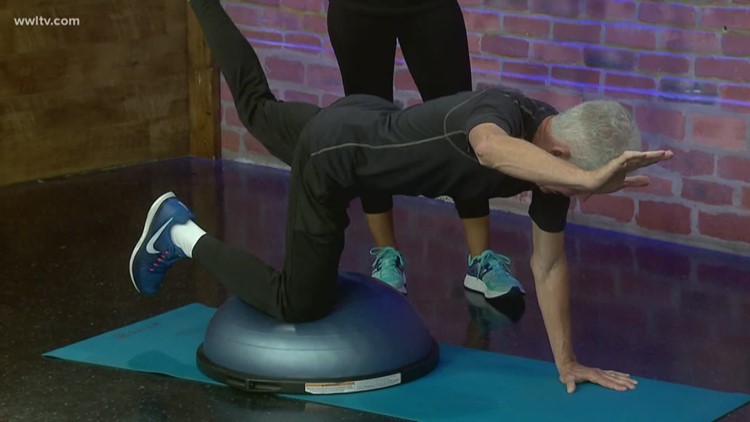NEW ORLEANS — The Department of Health and Human Services (HHS) recently updated the Physical Activity Guidelines for Americans (PAG), 2nd Edition. HHS says the guidelines encompass the amounts of physical activity to improve a variety of health outcomes for multiple population groups.
The guidelines call for preschool-aged children (3 through 5 years) to be physically active throughout the day to enhance growth and development. Children and adolescents aged 6 through 17 years should do 60 minutes or more of moderate-to-vigorous physical activity daily.
Physical inactivity accounts for an estimated $117 billion in annual health care costs – resulting in a 10% premature risk to a shorter lifespan.
Research has demonstrated that, “a single episode of moderate-to-vigorous physical activity can improve sleep, reduce anxiety symptoms, improve cognition, reduce blood pressure, and improve insulin sensitivity on the day the activity is performed. Most of these improvements increase, and additional benefits occur, with the regular performance of moderate-to-vigorous physical activity.”
From the adult perspective, HHS recommends at least 150 minutes to 300 minutes a week of moderate-intensity, or 75 minutes to 150 minutes a week of vigorous-intensity aerobic physical activity, or an equivalent combination of moderate- and vigorous-intensity aerobic activity.
In addition, adults should also do muscle-strengthening activities on 2 or more days a week. Older adults should do multicomponent physical activity that includes balance training, as well as, aerobic and muscle-strengthening activities – while pregnant and postpartum women should do at least 150 minutes of moderate-intensity aerobic activity a week.
Adults with chronic conditions or disabilities, who are able, should follow the key guidelines for adults and do both aerobic and muscle-strengthening activities.
It’s a move it or lose it – your health – philosophy.
The individual components of the PAG recommendations include: aerobic activity, muscle and bone strengthening, balance activities, and multicomponent physical activity.
Aerobic (with air) is composed of three components: frequency, intensity, and time. The frequency and time commitment are previously noted.
From the physical activity perspective, the PAG notes that moderate-intensity activities include walking briskly at 2.5 to 4.0 mph, playing volleyball, or raking the yard, while vigorous-intensity
activities include jogging or running, carrying heavy groceries, or participating in a strenuous fitness class.
Some activities, according to the PAG, such as swimming or riding a bicycle, can be either moderate or vigorous intensity, which is dependent on the effort. Light-intensity physical activity, such as walking slowly at 2 mph or less or doing light household chores, may also provide some additional health benefits by replacing sedentary behavior like sitting with light-intensity activity – such as gardening.
From a muscle strengthening perspective, the recommendations include resistance exercise – body weight, weight (isotonic), and isokinetic (accommodating) training. Muscle strengthening involves a frequency (at least twice weekly), intensity – the weight or force of resistance - and times is based on sets and repetitions per exercise – like push-ups.
Bone strengthening exercise includes weight-bearing activity that causes an impact with the ground – such as jump rope, dance, or calisthenics – which can be aerobic and strengthening simultaneously.
Balance training encompasses activities that, “can improve the ability to resist forces within or outside of the body that cause falls, while a person is stationary or moving. Strengthening muscles of the back, abdomen, and legs also improves balance.”
Comparing the benefits for adults of moderate versus vigorous intensity exercise, the PAG says that 2 minutes of moderate-intensity activity counts the same as 1 minute of vigorous-intensity activity. For example, 30 minutes of moderate-intensity (3-4 METs) activity is roughly the same as 15 minutes of vigorous-intensity (6-8 METs) activity.
1 MET is equivalent to the resting metabolic rate or the energy expenditure while awake and sitting quietly. Moderate-intensity activities have a MET value of 3 to 5.9 – with vigorous-intensity activities equal to of 6 METS or greater.
The federal government provides resources – health.gov/paguidelines – to gain more insight into how we all can become healthier through something as simple, yet challenging, as moving our body.



